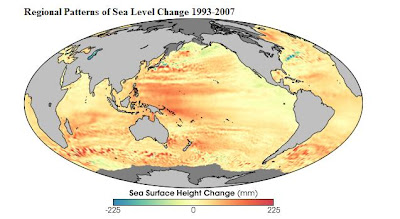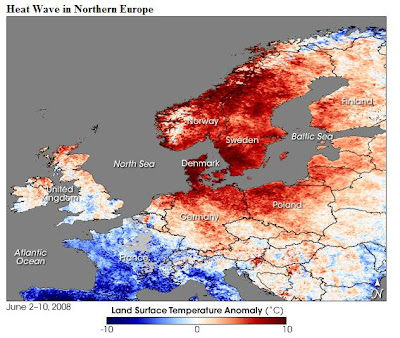
Top 50 Large City Airports at Risk
Top 100 Regional Airports at Risk
This is the blog of a modern day Cartographer thrown into the business world. Over the course of my journeyman's career I have wandered through positions in government, news agencies, consulting corporations and rogue start ups. The hard-earned working theory I have developed is simple. In life, communication is hard work. In business, effective communication is critical. Hence, this blog parallels the location Intelligence practices on www.GeoSteppes.com.



Another Cool Geo-Pic from NASA's Earth Observatory.
There is something striking about the coast edges that makes this image intriguing.
Click here to view full image (1352 kb)
"Cut & Paste Description" Highlights:
" ....In 2008, one out of every four people living in Senegal lived in the coastal capital of Dakar. Over previous decades, the city spread over the Cap Vert Peninsula as a result of both migration and growing families. In the 1940s, the city occupied just the southern tip of the peninsula. By the beginning of the twenty-first century, cityscape had sprawled both northward and eastward..... "
References:
United Nations Environment Programme. (2008). Africa: Atlas of Our Changing Environment. Division of Early Warning and Assessment, United Nations Environment Programme, Nairobi, Kenya.
Hopkins, B. (2008). Birding in the Dakar area. Seawatching in Senegal.
NASA image created by Jesse Allen, using Landsat data provided by the United States Geological Survey. Caption by Michon Scott.

 ----------------------------------------------------------------------------------------------------------------------------------------------------------------------------------------------------------------------------------------------------------------------------------------------------------------------------------------------------------------------------------------------------------------------------------------------------------------------This is an interesting consequence of weather - low carbon absorbtion. As weather patterns may increase to extremes with global climate change - recalcs to absorbtion rates seem re need "rethinking".
----------------------------------------------------------------------------------------------------------------------------------------------------------------------------------------------------------------------------------------------------------------------------------------------------------------------------------------------------------------------------------------------------------------------------------------------------------------------This is an interesting consequence of weather - low carbon absorbtion. As weather patterns may increase to extremes with global climate change - recalcs to absorbtion rates seem re need "rethinking".

Well, so now we know where is started....
Cut & Paste Highlights:
" ... Unlike the water in a sink or a bathtub, the water level in Earth’s oceans is not the same everywhere; sea level varies with location and time. On time spans of hours to days, sea level is influenced by tides, winds, and waves, including storm surges. Sea level rises when oceans warm, and it drops when they cool (because water expands when it heats up and contracts when it cools). Regional variations in sea level can persist for many years, even a decade. Underlying all these changes is the slower rise and fall in global average sea level as ice ages recede and advance over millenia.
This map shows global patterns of changes in sea level (sea surface height) measured by satellite-based altimeters (Topex and Jason 1 satellites) from 1993 through the end of 2007. Places where the sea surface height increased up to 225 millimeters (about 8.9 inches) are shown in dark red; places where sea level dropped are blue. The most widespread change in sea level over this time period was an increase in the Western Pacific sea surface height. During the period spanned by this image, a climate pattern called the Pacific Decadal Oscillation was in its warm phase, and sea surface temperatures were above average in much of the basin. Thermal expansion during this warm phase would be consistent with a rise in sea level...."
Full Article:
http://earthobservatory.nasa.gov/Newsroom/NewImages/images.php3?img_id=18075

This one wins for "where the Next Cool Geo-Pics will come from" award.
Click here to view full image (360 kb)
Cut & Paste Highlights:
" When we hear the word topography, most of us think of mountains and valleys on dry land. But the surface of the ocean has topography, too, and the variation in the height of the sea surface from place to place reveals important information about weather, climate, and rising sea level. On June 20, 2008, NASA launched the Ocean Surface Topography Mission (OSTM)/Jason 2 satellite, the latest in a series of U.S./French satellites to collect observations of ocean surface height...."
Full Article:
http://earthobservatory.nasa.gov/Newsroom/NewImages/images.php3?img_id=18069
